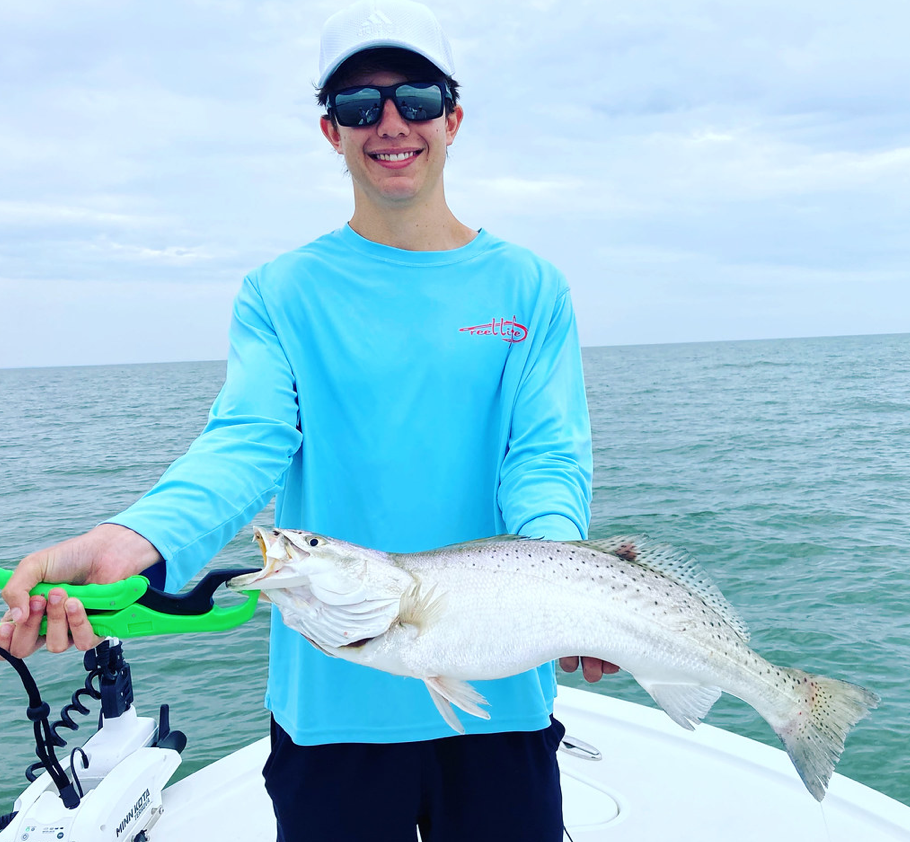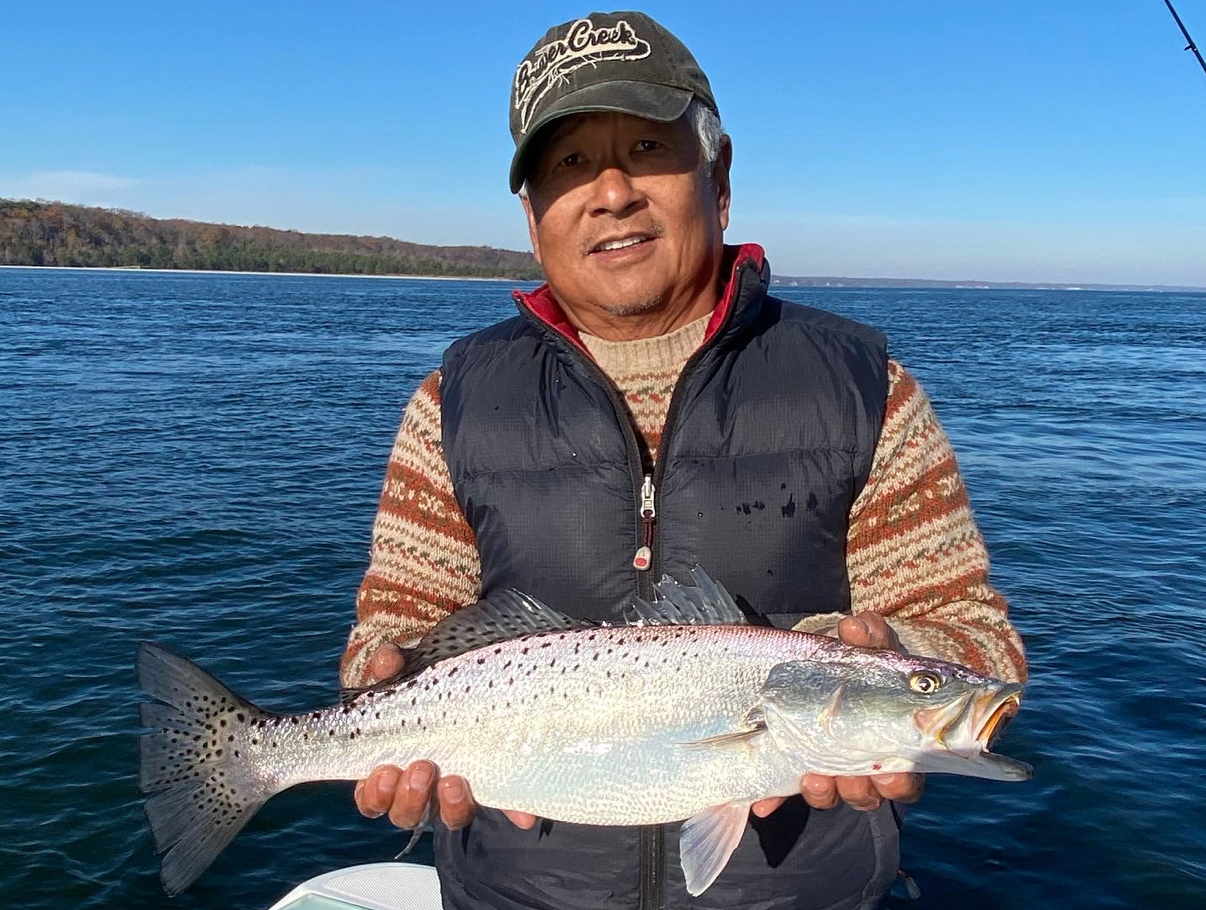
Speckled Trout Fishing in Maryland
Speckled trout, also known as spotted sea trout, are a hard-fighting and delicious species beloved by anglers. This incredibly popular game fish can be found in brackish and salt waters along much of the Gulf of Mexico all the way to Delaware Bay.
Fun to catch, these fish travel in schools, moving from salt water to coastal marshes throughout the year—providing anglers an extremely passionate fishery. But don't get them confused with the small stream trout anglers catch in Western Maryland.

Key Distinguishing Markings:
- Spotted sea trout are dusky gray on top fading to silver at the belly.
- The upper body is marked with numerous dark spots which extend into the dorsal and tail fins.
- The dorsal and tail fins of the spotted seatrout are pale yellowish green.
- Spotted sea trout have a pair of enlarged canine teeth in their upper jaw and the lower jaw is projecting, as in a weakfish.
Where to Find Them
A middle of the food chain predator, speckled trout are a critical component of the ecosystem; they commonly inhabit shallow bays and flats during the warmer months of spring and summer while moving into deeper waters of the Chesapeake Bay during the fall and winter.
Trout prefer to stick around seagrass and oyster beds, both of which are rich with bait. An open bay or wide flat filled with underwater structures are solid choices to fish. Look for eelgrass and other submerged aquatic grasses that grow on the bottom in great quantities. Other good spots are areas that contain a mix of grass beds, ancient stumps, oyster bars, and sandy open bottom. These habitats tend to hold immense numbers of crabs, shrimp, forage fish, and other species that speckled trout feed on.
Known for being primarily a shallow water predator, “specks” tend to inhabit the flats and creeks of the Bay’s lower Eastern Shore, from the Choptank River south to the mouth of the Bay. Tangier Sound is ground zero for Maryland speckled trout fishing, with its undeveloped marsh islands, miles of eelgrass flats, and acres of submerged stump fields.
What to Use
While live bait, more common than not, is the best option, some anglers have great success using peeler crabs, soft-shelled crabs, fresh shrimp, bloodworms and cut fish. When choosing artificial lures for catching speckled trout, matching the hatch is key. This means using lures that mimic the bait around the area you are fishing. Typically, Maryland has an abundance of bay anchovies, killifish, menhaden, spot and white perch.
The most popular lures tend to be simple jigs rigged with soft plastic bodies. Some anglers prefer grub-style or slender bodies, while others fish with small shad bodies. Bucktail-type jigs are also popular, especially when combined with lure bodies or bait strips. Other popular lures include small spoons, metal jigs, swimming plugs and surface chuggers.
Get Ready for Your Next Fishing Outing
In need of additional information, inspiration, or a preview of what Maryland has to offer? Check out Fish & Hunt Maryland’s latest articles written by fellow sportsmen and women and local partners along with our great library of videos available.
Be sure to acquire your license from the Maryland Department of Natural Resources if you plan on heading out on your own, charter passengers are covered by the captain’s license.
Visit our Planning Resources page for information on fishing charters and guides, lodging options, marinas, retailers and more. And if you’re up for a quick getaway, be sure to check out Visit Maryland for places to stay, dining, and things to do while you’re here.
